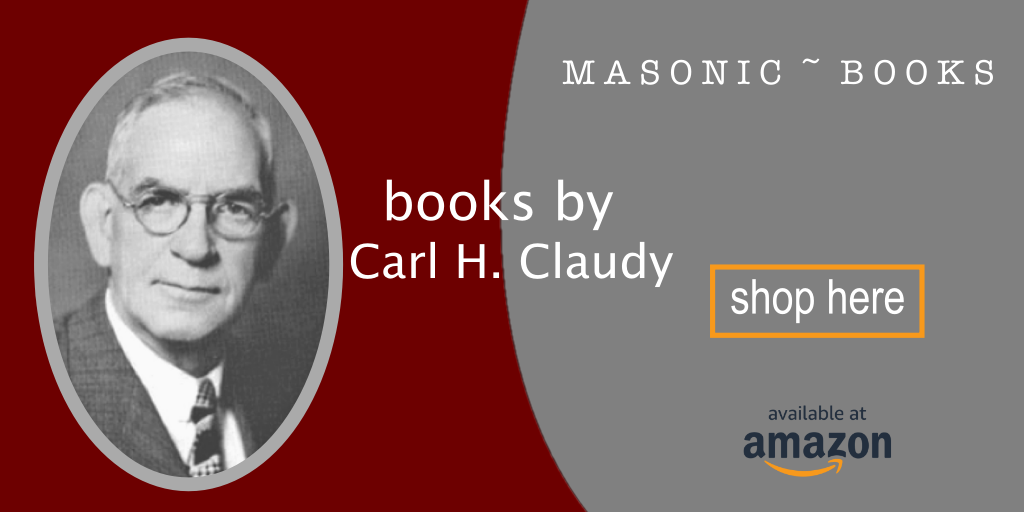And King Solomon sent and fetched Hiram out of Tyre. He was a widow’s son of the tribe of Naphtali, and his father was a man of Tyre, a worker in brass; and he was filled with wisdom, and understanding, and cunning to work all works in brass.
And he came to King Solomon, and wrought all his work. For he cast two pillars of brass, of eighteen cubits high apiece; and a line of twelve cubits did compass either of them about….
And he set up the pillars in the porch of the temple; and he set up the right pillar, and called the name thereof Jachin; and he set up the left pillar, and called the name thereof Boaz. And upon the top of the pillars was lily work; so was the work of the pillars finished.
– I Kings vii, 13-22.
Also he made before the house two pillars of thirty and five cubits high, and the chapiter that was on the top of each of them was five cubits.
And he made chains, as in the oracle, and put them on the heads of the pillars and made an hundred pomegranates and put them on the chains.
– II Chronicles iii, 15-16
From the dawn of religion the pillar, monolith or built-up, has played an important part in the worship of the Unseen.
From the huge boulders of Stonehenge, among which the Druids are supposed to have, performed their rites, through East Indian temples to the religion of ancient Egypt, scholars trace the use of pillars as an essential part of religious worship; indeed, in Egypt the obelisk stood for the very presence of the Sun God himself.

Freemasons’ Hall Two Ionic pillars representing wisdom grace the eastern side of the Grand Temple, London England
IMAGE LINKED: wikimedia Attribution 4.0 International (CC BY 4.0)
It is not strange, then, that Hiram of Tyre should erect pillars for Solomon’s Temple. What has seemed strange is the variation in the dimensions given in Kings and Chronicles; a discrepancy which is explained by the theory that Kings gives the height of one and Chronicles of both pillars together.
Of the ritualistic explanation of the two brazen pillars it is not necessary to speak at length, since the Middle Chamber lecture is quite satisfyingly explicit regarding their ancient use and purpose.
But their inner symbolic significance is not touched upon in the ritual; it is one of the hidden beauties of Freemasonry left for each brother to hunt down for himself.
It is a poor symbol that has but one meaning. Of the many interpretations of the Brazen Pillars, two are here selected as vivid and important.
The ancients believed the earth to be flat and that it was supported by two Pillars of God, placed at the western entrance of the world as then known.
These are now called Gibraltar, on one side of the Strait, and Ceuta on the other.
This may account for the origin of the twin pillars. However this may be the practice of erecting columns at the entrance of an edifice dedicated to worship prevailed in Egypt and Phoenicia, and at the erection of King Solomon’s Temple the Brazen Pillars were placed in the porch thereof.
Some writers have suggested that they represent the masculine and feminine elements in nature; others, that they stand for the authority of Church and State, because on stated occasions the high priest stood before one pillar and the king before the other.
Some students think that they allude to the two legendary pillars of Enoch, upon which, tradition informs us, all the wisdom of the ancient world was inscribed in order to preserve it from inundations and conflagrations.
William Preston supposed that, by them, Solomon had reference to the pillars of cloud and fire which guided the Children of Israel out of bondage and up to the Promised Land.
One authority says a literal translation of their names is: “In Thee is strength,” and, “It shall be established,” and by a natural transposition may be thus expressed:
“Oh, Lord, Thou art almighty and Thy power is established from everlasting to everlasting.”
It is impossible to escape the conviction that in meaning they are related to religion, and represent the strength and stability, the perpetuity and providence of God, and in Freemasonry are symbols of a living faith.
Faith cannot be defined. The factors of mightiest import cannot be caught up in speech. Life is the primary fact of which we are conscious, and yet there is no language by which it can be fenced in.
No chart can be made of a mother’s love; it is deeper than words and reads in little, common things a wealth that is more than golden.
While we cannot define, we can recognize the power of faith. It generates energy.
It is the dynamics of elevated characters and noble spirits, the source of all that bears the impress of greatness.
And we can realize its necessity. Without faith it would be impossible to transact business.
“It spans the earth with railroads, and cleaves the sea with ships.
It gives man wings to fly the air, and fins to swim the deep. It creates the harmony of music and the whir of factory wheels.
It draws man up toward the angels and brings heaven down to earth.”
By it all human relationship is conditioned. We must have faith in institutions and ideals, faith in friendship, family and fireside, faith in self, faith in man, and faith in God.
Freemasonry is the oldest, the largest, and the most widely distributed fraternal Order on the face of the earth to-day by reason of its faith in God.
At one end of the Second Section of the Fellowcraft Degree are the Two Brazen Pillars – a symbol of that faith; at its other end is the Letter “G”, a living sign of the same belief.
But there is another interpretation of the symbolism.
The Entered Apprentice in process of being passed to the degree of Fellowcraft passes between the pillars.
No hint is given that he should pass nearer to one than to the other; no suggestion is made that either may work a greater influence than the other. He merely passes between.
A deep significance is in this very omission. Masons refer to the promise of God unto David; the interested may read Chapter vii of II Samuel for themselves, and gather that the establishment promised by the Lord was that of a house, a family, a descent of blood from David unto his children and his children’s children.
The pillars were named by Hiram Abif; those names have many translations.
Strength and establishment are but two; power, and wisdom or control, fit the meaning of the words as well.
Used to blast stumps from fields dynamite is an aid to the farmer.
Used in war it kills and maims. Fire cooks our food and makes steam for our engines; fire also burns up our houses and destroys our forests.
But it is not the power but the use of power which is good or bad.
The truth applies to any power; spiritual, legal, monarchial, political, personal.
Power is without either virtue or vice; the user may use it well or ill, as he pleases.
Freemasonry passes the brother in process of becoming a Fellowcraft between the pillar of strength – power; and the pillar of establishment – choice or control.
He is a man now and no minor or infant. He has grown up Masonically. Before him are spread the two great essentials to all success, all greatness, all happiness.
Like any other power – temporal or physical, religious or spiritual – Freemasonry can be used well or ill.
Here is the lesson set before the Fellowcraft; if he like David would have his kingdom of Masonic manhood established in strength he must pass between the pillars with understanding that power without control is useless, and control without power, futile.
Each is a complement of the other; in the passage between the pillars the Fellowcraft not only has his feet set upon the Winding Stairs but is given – so he has eyes to see and ears to hear – secret instructions as to how he shall climb those stairs that he may, indeed, reach the Middle Chamber.
He shall climb by strength, but directed by wisdom; he shall progress by power, but guided by control; he shall rise by the might that is in him, but arrive by the wisdom of his heart.
So seen the pillars become symbols of high value; the initiate of old saw in the obelisk the very spirit of the God he worshiped.
The modern Masonic initiate may see in them both the faith and the means by which be may travel a little further, a little higher toward the secret Middle Chamber of life in which dwells the Unseen Presence.
Article by: Carl H. Claudy
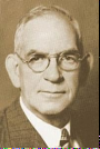
Carl Harry Claudy (1879 – 1957) was an American author, magazine writer, and journalist for the New York Herald.
His association with Freemasonry began in 1908, when, at the age of 29, he was raised a master Mason in lodge Harmony No. 17 in Washington, DC. He served as its master in 1932 and eventually served as Grand Master of Masons in the District of Colombia in 1943.
His Masonic writing career began in earnest when he became associated with the Masonic service Association in 1923, serving as associate editor of its magazine, The master mason, until 1931.
Under his leadership the service Association was brought to a place of predominance through his authorship and distribution of the short talk bulletin which made his name familiar to virtually every lodge in the country.
 Old Tiler Talks - Eyes Lifted High The Old Tiler Talks first published in 1925, by Carl Claudy, is a series of short anecdotal stories told in the setting of a new member asking an old tiler for his opinion on various masonic topics. These short articles are still very relevant, 100 years on, and hopefully provide some insight to new members today. |
 Old Tiler Talks - Masonic Libraries The Old Tilers talks first published in 1925, by Carl Claudy, is a series of short anecdotal stories told in the setting of a new member asking an old tiler for his opinion on various masonic topics. These short articles are still very relevant, 100 years on, and hopefully provide some insight to new members today. |
 Old Tiler Talks - So Many Rascals "Why are there so many rascals in the Fraternity, and why don't we turn them out?" a new member voiced to the old tiler for his opinion. These short articles are still very relevant, 100 years on, and hopefully provide some insight to new members today. |
 Old Tiler Talks - The Greatest Work The Old Tiler asked, "what is the greatest work of Masonry?" The New Brother sat by the guardian of the door and pulled out his cigar case. - Another instalment of wisdom by Carl Claudy, The Greatest Work |
 Old Tiler Talks - Why Men Love Freemasonry The 'Old Tiler Talks' first published in 1925, by Carl Claudy, is a series of short anecdotal stories told in the setting of a new member asking an old Tiler for his opinion on various Masonic topics. These short articles are still very relevant, 100 years on, and hopefully provide some insight to new members today. |
 Old Tiler Talks - Seeking a Little Light The Old Tilers talks first published in 1925, by Carl Claudy, is a series of short anecdotal stories told in the setting of a new member asking an old tiler for his opinion on various masonic topics. These short articles are still very relevant, 100 years on, and hopefully provide some insight to new members today. |
 The new mason laments that practically speaking, Masonry is a failure, and it depresses me … Masonry cannot be a failure, because men fail as Masons. The Old Tilers talk by Carl Claudy |
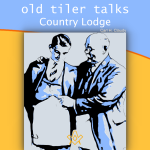 Old Tiler Talks - Country Lodge A lesson in the importance of an open mindset to observe, not to judge, but to learn and accept that we can achieve the desired outcome employing a different process. by Carl Claudy |
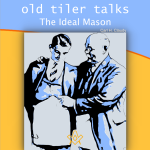 Old Tiler Talks - The Ideal Mason "What's your ideal of Freemasonry?" asked the Younger Mason - A short anecdotal story told in the setting of a new member asking an old tiler for his opinion on various masonic topics by Carl Claudy |
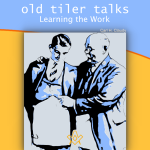 Old Tiler Talks - Learning the Work A short anecdotal story told in the setting of a new member asking an old tiler for his opinion on various masonic topics by Carl Claudy |
 Masonic first appointments and promotions might appear to be inequitable for one point a view, but some times, one point does not show the whole picture. A perfectly articulated story by Claudy, we should not compare one persons abilities with another. |
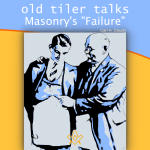 Old Tiler Talks - Masonry's 'Failure' Masonry fails because it doesn’t interest men sufficiently to make them practice what they preach. A perfectly articulated story by Claudy Masonry does not fail men. Men fail Masonry. Masonry has the teachings. |
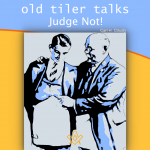 A perfectly articulated story by Claudy reminds us of a lesson from the Second Degree Charge; in the decision of every trespass against our rules, judge with candour, admonish with friendship, and reprehend with mercy. |
 Old Tiler Talks - A Masonic Speech A Masonic Speech - I can tell you the essence of appeal. It is drama. If you want your hearers to hang on your words, dramatize your subject |
 Old Tiler Talks - A Mason's Christmas A Mason's Christmas - Do you believe in Christmas celebrations should be held by the lodge ? Should members be asked to contribute to one and engage in Christmas festivities ? What is the old tilers take on this ? |
 Advertising - We would do more good in the world if we advertised ourselves more… Why ? |
 Uncover the mystery behind one of the oldest and most widespread symbols denoting God. |
 Do you want to discover the originals of the five points of fellowship ? |
 The mystery behind the two great pillars that stood at the porchway entrance of King Solomon Temple |
 Three numbers, what are their masonic significance? Pythagoras has something to say about them |
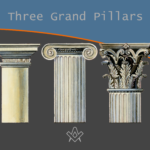 What are the Three Grand Pillars ?, wisdom, strength, and beauty - then later we hear of the Doric, Ionic, and Corinthian columns |
 This emblem contains more real food for thought than any other in the lecture of the Sublime Degree. |
 The Hiramic Legend is the glory of Freemasonry; the search for that which was lost is the glory of life |
 How are the Fellowcraft's five steps connected the five senses of human nature |
 How to explain the principle tents of the craft to a newly made brother |
 What are the lesser lights and where are they placed on our Lodges |
 Like so much else in Freemasonry the Middle Chamber is wholly symbolic |
 In the true sense of the words Freemasonry is not a secret society but a society with secrets. |
 Three Great Lights – the Volume of the Sacred Law, the Square, and the Compasses |
 Entered Apprentice Lambskin Apron; More ancient than the Golden Fleece or Roman Eagle, more honourable than the Star and Garter ... |
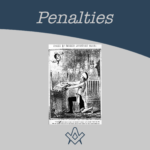 To the initiate, the penalty in his obligation comes with a shock of surprise and sometimes consternation. |
 What is a point within a circle |
masonic knowledge
to be a better citizen of the world
share the square with two brothers

click image to open email app on mobile device




